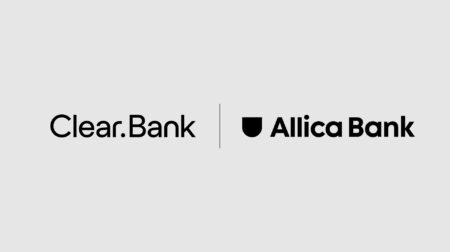Saving smarter: how innovative services are supporting consumers in 2024

Are you planning to make positive changes in 2024? You’re not alone.
For some of us, that means fitness plans, changes to diets and home improvements. Though consumers’ individual goals vary, for many people, improving their financial health boils down to spending less and saving more.
However, as the ongoing cost of living crisis continues to strain household finances, this is easier said than done. While inflation is now starting to trend in a lower direction, its impact is still being felt across the UK, and many consumers are struggling to save, despite already tightening their purse strings.
As with so many resolutions, it can be tough for consumers to find the motivation to start building positive saving habits. It’s easy to be put off by the assumption that major lifestyle changes are required to make saving worthwhile.
But the state of the economy isn’t the only factor at play here. Following years of rock-bottom interest rates, the savings market has been dominated by uninspiring offerings that fail to meet savers’ primary needs. A lack of product differentiation has left many consumers feeling apathetic about saving and struggling to set money aside.
Until now. A wave of fintech firms has emerged that have developed new approaches to encourage consumers to build positive saving habits and reach their personal savings goals, whatever they may be. These firms provide a fresh approach to saving, investing and even long-term wealth management through a more user-friendly, enjoyable and sustainable approach.
In the UK, fintechs are adopting several approaches to help consumers save.
The first is automation, for example Chip and Plum and challenger banks such as Monzo enable customers to create rules that set aside small amounts into a savings pot or account on their behalf. Automation is also offered where any purchases are ‘rounded up’ to the nearest pound or more, and the difference is sent straight to a savings account.
This approach solves the problem of people forgetting to transfer funds to a savings account or putting aside money at opportune times, for example, on payday.
Some services calculate how much a user can afford to save each week, for example, by using Open Banking connectivity to analyse spending patterns and suggest different savings ‘levels’ that the customer can change whenever they like. Customers can also move money into separate savings pots or accounts, offering instant access or fixed-term products with additional tax benefits, such as Individual Savings Accounts (ISAs).
Digital marketplaces are another fintech innovation helping savers achieve more. These marketplaces tend to offer a wider choice of products from less well-known savings providers. Raisin is a fintech savings marketplace that enables customers to open accounts with providers across the UK and Europe. It has established partnerships with a range of UK challenger banks and European banks to offer competitive fixed-term and notice savings products through its online platform.
What do all these fintech savings platforms have in common? Flexibility. This gives them an upper hand over incumbent providers, as customers can instantly change roundup amounts, pause saving, or withdraw money back to their bank accounts.
Incumbent banks have been criticised for being slow to pass on interest rate rises to their savings customers. This presents an enormous growth opportunity for challengers. However, in a crowded market, challengers’ ability to further grow their customer base will require them to be competitive and ensure their services appear high on the tables of sites such as Money Saving Expert and MoneySuperMarket.
While these firms can offer wallets to store funds by partnering with Electronic Money Institutions (EMIs) and Electronic Payment Institutions (EPIs), they cannot pass on interest to their clients (you can read more about the technical differences in our Buyer’s guide). As a result, savings and investment platforms are increasingly seeking to embed licensed banking services directly into their offerings to improve the user experience and offer interest rates that attract and retain new customers.
Firms like Chip and Raisin UK have already started using ClearBank’s Embedded Banking product, which enables them to pay interest to customers. The FSCS-protected funds are held securely at the Bank of England and earn interest proportionately, with ClearBank managing all the calculations and payments, while clients retain control of interest rates offered to customers.
This model enables our clients to focus on the customer experience while ClearBank takes care of the technical infrastructure.
For example, Raisin UK customers benefit from Confirmation of Payee (CoP), which provides an additional layer of security when customers transfer funds into their customer account, powered by ClearBank’s API. This supports a more efficient fund transfer and account opening processes, allowing customers to begin earning returns on their savings even quicker as they transfer funds to savings accounts held by partner banks on the Raisin UK marketplace.
“As we enter the next phase of the business, continuing to scale the platform through new customers and banking partners, an embedded banking solution was required to help match this scale and speed. ClearBank operates the perfect solution to enable us to do this and we are excited about the road ahead.”
Do these challenges resonate with your business? To find out how ClearBank can support you in competing with incumbent banks and new challengers to deliver a great savings experience, get in touch.
Charlotte Bell is a senior account executive within ClearBank’s Non-Bank Financial Institutions team. She has over a decade of experience in financial services, having started her career at NatWest/RBS within payments and digital product management before moving into cash management sales.


